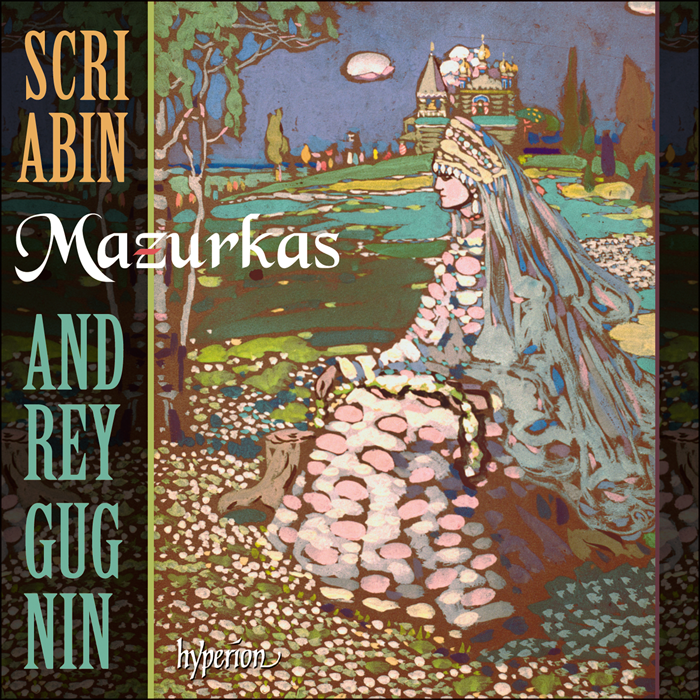Scriabin: Mazurkas
Andrey Gugnin (piano)
CDA68355
Scriabin clearly responded to the passionate and emotionally charged nature of the mazurka, qualities shared by all twenty-three of the exquisite miniatures recorded here.
Behind The Cover
Discussions of Scriabin—whether as composer, pianist or human being—tend to focus on the visionary and apocalyptic aspects of the man and his music, traits which became increasingly pronounced throughout his life. Perhaps this is only to be expected from someone who claimed, 'I am the creator of new worlds. I am God!' It's those characteristics which we associate with the late orchestral works, often written for vast and unconventional forces (Prometheus includes a part for clavier à lumières; a keyboard which 'plays' colours). By comparison, the mazurkas are compact, many of only two or three minutes' duration and revealed as miniature masterpieces in Andrey Gugnin's accounts. Which isn't to deny the stylistic and harmonic evolution of each successive opus number: as Simon Nicholls writes in the booklet notes, in his last mazurka, Scriabin's engagement with the form 'reaches a state of disintegration, of dematerialization or spiritualization.' It's certainly a long way from Chopin.
Wassily Kandinsky was another creative artist whose work evolved dramatically over the course of his life, and it's instructive to compare the relative naturalism of The Bride (1903) with the flamboyantly abstract, joyful canvases from the 1920s onwards. Despite the interruptions of revolution and war, it was Kandinsky who enjoyed much the longer creative life: born in 1866, six years before Scriabin (both were natives of Moscow), Kandinsky lived until 1944. Ironically, it was Scriabin who declared, 'I must live as long as possible'; he died of septicaemia in 1915, aged just 43.

